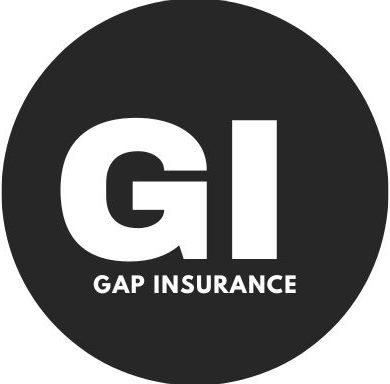What is Asset and Liability Management?
Asset and Liability Management (ALM) is a systematic process designed to manage the risks associated with the mismatch between assets and liabilities over time. It plays a crucial role in ensuring long-term stability and profitability by aligning asset investments with liability obligations.
ALM combines risk management and financial planning to address various types of risks. For instance, interest rate risk can significantly impact financial institutions by affecting cash flows and the economic value of equity. Similarly, liquidity risk can lead to severe consequences if an institution is unable to meet its cash-flow obligations. Other risks such as credit risk and currency risk also fall under the purview of ALM.
The focus on these risks underscores the importance of ALM in maintaining financial stability. By identifying potential mismatches between assets and liabilities, ALM helps institutions take proactive measures to mitigate these risks, thereby ensuring sustained profitability.
- Unlocking Property Ownership: The Comprehensive Guide to the Bundle of Rights in Real Estate
- What is NFT Finance? Market Mechanisms, Infrastructure, and Economic Impact
- How to Calculate and Interpret Absorption Rate in Real Estate: A Guide for Investors and Homebuyers
- How Cash on Delivery (COD) Works: Benefits, Risks, and Best Practices for Businesses
- What is NFC? A Technical Guide to Near Field Communication Technology
Key Components of ALM
Strategic Allocation of Assets
Strategic asset allocation is a key component of ALM. It involves optimizing asset investments to match liability obligations effectively. This process requires a deep understanding of the institution’s risk tolerance, investment horizon, and cash-flow requirements. By aligning assets with liabilities, institutions can reduce the risk of mismatches that could lead to financial instability.
For example, if a pension fund has long-term liabilities, it might allocate its assets into long-term bonds or equities that match the duration of these liabilities. This strategy helps in reducing the risk associated with interest rate changes or other market fluctuations.
Risk Mitigation
ALM addresses several types of risks that could impact financial institutions. Here are some of the primary risks and how they are mitigated:
– Interest Rate Risk: This risk arises from changes in interest rates that can affect the value of both assets and liabilities. Techniques such as hedging using derivatives (like swaps or options) can help mitigate this risk.
– Liquidity Risk: This risk occurs when an institution cannot meet its short-term cash-flow obligations. Strategies like maintaining high-quality liquid assets and ensuring stable funding sources are crucial.
– Credit Risk: This risk is associated with the possibility that borrowers may default on their loans. ALM involves calibrating company-wide tools to assess and manage credit risk effectively.
Techniques such as risk overlays and the use of advanced analytics help in identifying and mitigating these risks proactively.
Regulatory and Capital Frameworks
Regulatory and capital frameworks play a vital role in ALM. These frameworks ensure that financial institutions maintain adequate capital buffers to absorb potential losses and comply with regulatory requirements. For instance, Basel III guidelines for banks emphasize the importance of maintaining sufficient liquidity coverage ratios and capital adequacy ratios.
By adhering to these frameworks, institutions can ensure they have the necessary capital to cover unexpected losses, thereby maintaining financial stability.
Interest Rate Risk Management
Interest Rate Risk is one of the most significant risks managed under ALM. It arises from changes in interest rates that can affect the cash flows and economic value of equity of financial institutions.
To measure interest rate risk, institutions use various metrics such as:
– Macaulay Duration: This measures the weighted average time until cash flows are received.
– Modified Duration: This adjusts Macaulay Duration for changes in yield.
– Value at Risk (VaR): This estimates the potential loss in value over a specific time horizon with a given probability.
By using these metrics, institutions can better understand their exposure to interest rate changes and implement strategies to hedge against potential losses.
Liquidity Risk Management
Liquidity Risk is another critical risk managed through ALM. It occurs when an institution is unable to meet its short-term cash-flow obligations due to insufficient liquid assets or unstable funding sources.
Strategies for managing liquidity risk include:
– Maintaining high-quality liquid assets such as government bonds or cash reserves.
– Ensuring stable funding sources through diversified funding channels.
– Implementing contingency funding plans to address unexpected liquidity needs.
These strategies help institutions avoid liquidity crises that could lead to severe financial consequences.
Implementation and Oversight of ALM Policies
The implementation and oversight of ALM policies are crucial for their effectiveness. Here’s how it works:
– Board and Senior Management Oversight: The board and senior management play a pivotal role in setting ALM policies and risk limits. They ensure that these policies align with the institution’s overall strategy and risk tolerance.
– Risk Monitoring and Reporting Tools: Developing robust risk monitoring and reporting tools is essential for ongoing quantitative reporting of risk exposures. This helps in identifying potential risks early on and taking corrective actions.
– Customized ALM Strategies: Each financial institution has unique risks based on its activities and market conditions. Therefore, customized ALM strategies are necessary to address these specific risks effectively.
Leading ALM Practices
Best practices in ALM include several key elements:
– Identifying Risks Early: Before implementing new products or activities, institutions should identify potential risks associated with them. This proactive approach helps in mitigating risks before they become significant issues.
– External Resources: Having external resources or expert directors on the board can enhance understanding of balance-sheet risk management. These experts bring in fresh perspectives and advanced knowledge that can improve ALM practices.
By following these best practices, institutions can enhance their ability to manage financial risks effectively.
Case Studies and Examples
Real-world examples illustrate the effectiveness of well-implemented ALM strategies:
– For instance, a bank that successfully managed its interest rate risk by hedging its long-term loans saw significant reduction in potential losses during a period of rising interest rates.
– A pension fund that aligned its asset allocation closely with its liability obligations was able to maintain stable returns despite market volatility.
These case studies highlight the benefits of effective ALM strategies such as improved profitability and reduced risk exposure.
Nguồn: https://gapinsurance.click
Danh mục: Blog




